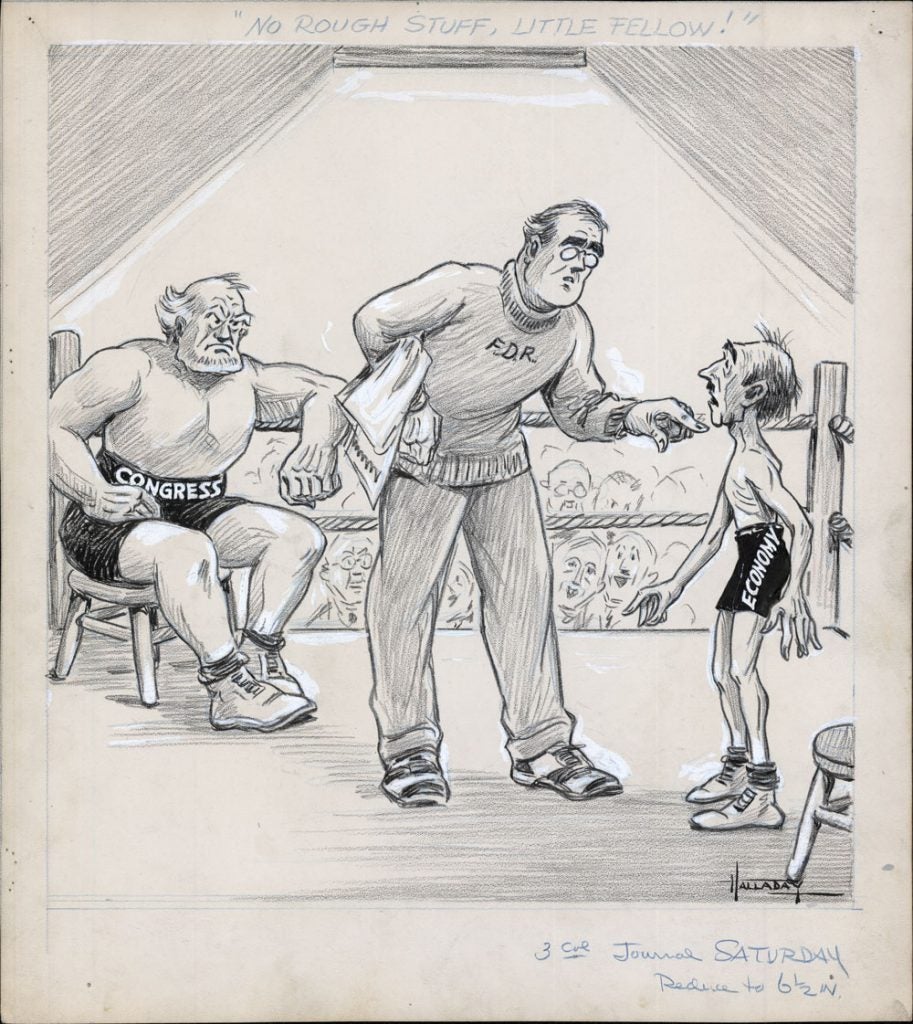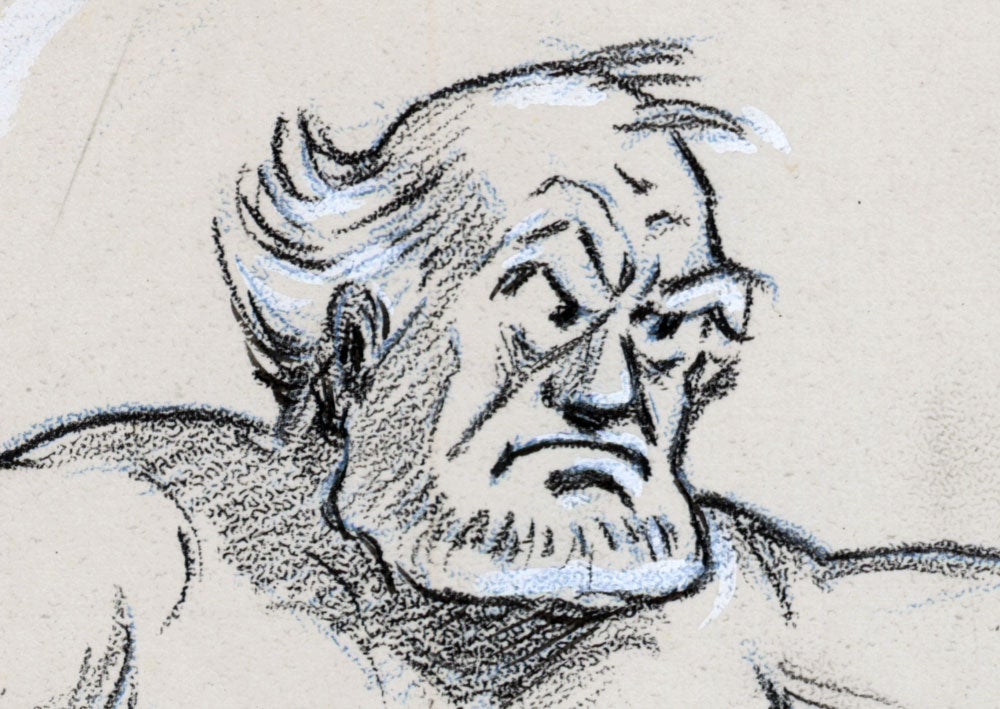
“No Rough Stuff, Little Fellow” (est. 1933)
by Milton Rawson Halladay (1874-1961)
14 x 17 in., ink on board
Coppola Collection
Halladay was a native of Vermont and a noted political cartoonist for the Providence Journal (Rhode Island) for nearly fifty years (1900-1947). His cartoons were published in countless other newspapers and magazines. He has been called “one of the deans of American political cartooning.” His cartoon commemorating the death of Thomas A. Edison was a runner-up for the Pulitzer Prize.
His great-great grandson is carrying on the artistic family tradition!
The First New Deal began almost immediately upon Roosevelt’s assumption of the presidency. FDR invoked the “analogue of war” as he spurred Congress towards a flurry of legislative activity that became known as the “Hundred Days”—from March to June 1933—in which the new President won passage of numerous bills designed to end the nation’s economic troubles. In general, the First New Deal looked to stabilize the U.S. financial system, provide relief and jobs to the suffering, and reenergize America’s capitalist economy.
FDR’s immediate task upon his inauguration was to stabilize the nation’s banking system. On March 6, Roosevelt declared a national “bank holiday” to end a run by depositors seeking to withdraw their money from faltering banks. FDR also called Congress into emergency session where the legislature enacted, nearly sight unseen, the President’s banking proposal. Under this plan, the federal government would inspect all banks, re-open those that were sufficiently solvent, re-organize those that could be saved, and close those that were beyond repair. On March 12, FDR went on the radio—giving the first of many “fireside chats”—to explain his plan to Americans and to assure them that their money would be safe in the re-opened banks. During the following weeks, Americans returned nearly $1 billion dollars to bank vaults.
FDR promised an energetic attack on the Great Depression with his New Deal. He kept his word, urging Congress to pass laws that established dozens of New Deal programs. But the New Deal accumulated a record of notable failures as well as successes. Mixed results were not the only enemy of the early New Deal, however. A host of critics arose on the Political Left and Right to attack Roosevelt and his policies. In 1934, conservative businessmen—and dissident Democrats like 1928 presidential candidate Al Smith—formed the American Liberty League, which tarred the New Deal as a radical and un-American assault upon the basic principles of capitalism and free enterprise.


